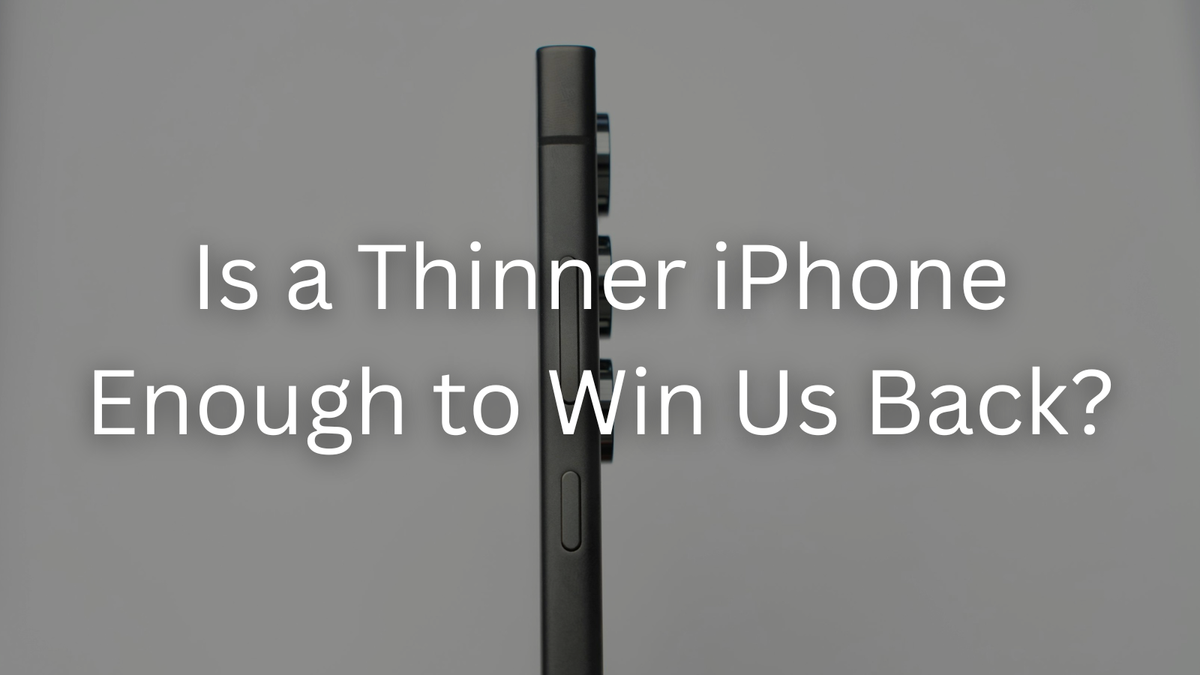Is a Thinner iPhone Enough to Win Us Back?

Apple’s iPhone has become one of the most familiar pieces of technology in the world—so familiar, in fact, that many of us don’t feel the need to upgrade anymore. According to a recent CNN analysis, Apple may be planning its most radical iPhone redesign in years: a significantly slimmer iPhone, possibly dubbed the iPhone “Slim” or “Air,” expected to debut with the iPhone 17 lineup later this year.
But the big question is: Is thin the new compelling?
Why Apple’s Making This Move
Apple’s iPhone business, while still massive, is not growing like it used to. In its most recent quarter, iPhone revenue was flat year-over-year, and Apple is losing ground in China, one of its most important markets. Chinese competitors like Xiaomi and Oppo have debuted ultra-sleek designs, and consumers in China place a high value on hardware aesthetics.
So it’s no surprise Apple wants to reignite excitement around the iPhone by making it thinner—reportedly shaving off about two millimeters from its current design. The slim version is expected to replace the larger iPhone Plus, and retain familiar features like the Dynamic Island and a dedicated camera button.

Here’s the Problem: Thinness Isn’t a Feature Anymore
Let’s be honest—a thinner iPhone won’t change how we use it.
Don’t get me wrong, I love a sleek device. But in 2025, what really makes a phone feel new or exciting isn’t just the body—it’s what the phone can do, especially with AI. Apple knows this too. That’s why it’s been working on something called Apple Intelligence, its umbrella term for a suite of AI-powered capabilities.
The issue? It’s not ready yet.
So far, Apple’s AI tools include things like summarizing notifications, generating emojis, and helping Siri offer smarter support. But the real promise—an AI-enhanced Siri that can control apps and understand your personal data contextually—has been delayed until next year.
That leaves Apple in a weird spot: AI isn’t quite ready, and hardware alone may not be enough to drive upgrades.

Why People Aren’t Upgrading Anymore
UBS analysts recently found that the average iPhone user now waits over 3 years before upgrading. That’s a far cry from the early 2010s, when every new iPhone brought a game-changing feature. These days, most phones are “good enough” for longer, and without a pressing reason—either functional or emotional—users are content to wait.
So, Apple has to find a way to make us care again.
My Take: It’s Not About Being Thin—It’s About Being Useful
Design matters. And sure, a thinner iPhone may grab attention, especially in design-conscious markets like China. But it’s not the design that keeps people engaged—it’s what the phone empowers them to do.
That’s why I’m more interested in Apple’s AI vision than its new chassis. If they can deliver on the promise of a smarter Siri that truly saves time and effort, that’s something I’d seriously consider upgrading for—even if my current iPhone still works fine.
Until then, a thinner iPhone feels more like a refresh than a revolution.

Looking Ahead: WWDC 2025 Could Be the Turning Point
Apple’s next big moment will be its Worldwide Developers Conference on June 9, where we’ll likely get a closer look at what Apple Intelligence can actually do. If Apple can show us that its AI isn’t just a gimmick—but a real productivity booster—then maybe, just maybe, pairing that with a sleeker design will be enough to get people excited again.
But that’s a big “if.”
What Do You Think?
- Would you upgrade your iPhone just for a thinner design?
- Are AI features more important to you than hardware changes?
- How long do you usually keep your phone before upgrading?
Let us know on X(Former Twitter)
Sources: Eadicicco, L. (2025, March 28). Apple needs a new reason to get you to buy a new iphone. it may have one | CNN business. CNN. https://www.cnn.com/2025/03/28/tech/apple-iphone-17-siri-upgrades-china/index.html










